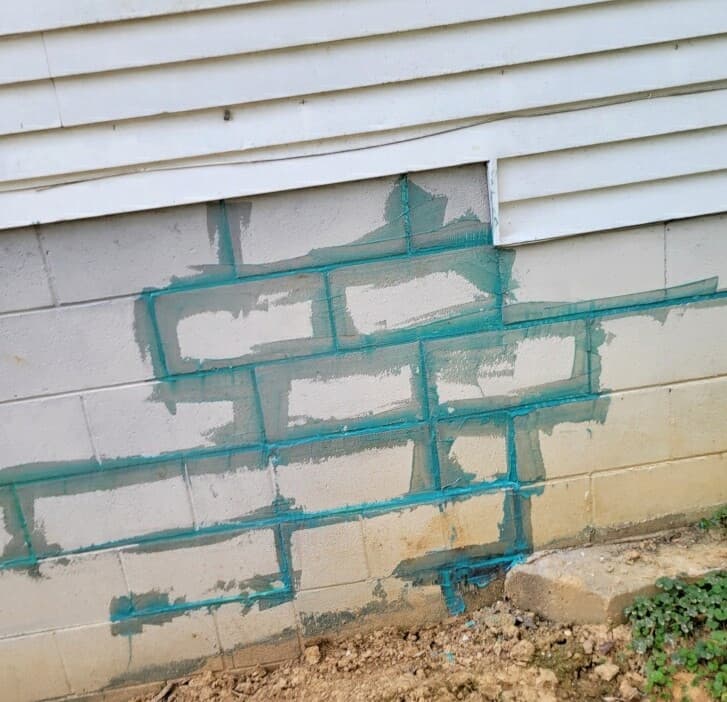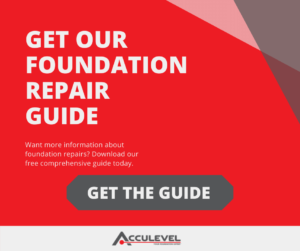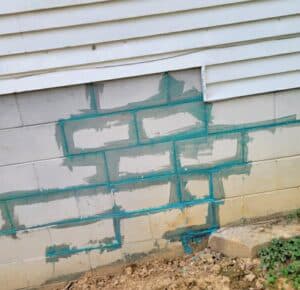
Foundation problems cause homeowners a lot of anxiety and concern. A settling foundation is a pretty common issue; stabilizing your foundation is crucial to protecting your home, but it can be expensive.
Acculevel is a family-owned and operated company that specializes in waterproofing and foundation repair. We’ve been helping homeowners restore their homes to health and stability since 1996. We pride ourselves on our accuracy, honesty, and expertise. Our goal is to provide each homeowner with a whole-home solution that fully repairs and addresses the problems they’re experiencing.
We believe the best customer is a well-informed one. In an earlier article, we explored the three most common signs of settling that a homeowner is likely to notice. But there are other symptoms that a professional contractor looks for. These more nuanced symptoms can help them verify their diagnosis and ensure their solution is the right fit for your home. It’s these more technical signs that we’re going to review today.

Do you need more information about settling, types of piers, repair costs? Our thorough review of these topics- and more- are available in our free homeowner’s guide to foundation repair.
There can be cracks in your foundation, both on the inside and outside of your home. This isn’t always a cause for major alarm. Interior cracks usually fall into one of three categories, ranging from minor issues to urgent concerns.
Not every exterior crack is a sign of settling, either. There are instances when brick exteriors or facades crack along the mortar. This can be caused by seasonal changes that degrade or damage the seams. Sometimes cracks in concrete are due to water intrusion, instead of erosion.
Water generally does one of two things to your foundation: it either pushes against it or undermines it. In industry terms, water causes hydrostatic pressure (cracking and bowing walls) or erosion (settling). If you’re not careful, you can sometimes mistake one for the other.

This photo was taken by an Acculevel team member after work was completed. The cracks between these concrete blocks were caused by water intrusion. To stabilize and repair this basement wall, carbon fiber straps were installed inside and epoxy crack repair was done both inside and out. (This epoxy can be painted over once it’s fully cured.)

This photo was taken by an Acculevel project advisor during an in-home assessment. The crack was caused by foundation settlement. Piers are needed to repair this home.
A foundation crack on its own is not proof of settling problems. This is why a quality contractor will look for multiple indications of settling.
Windows “sticking” is a vague term for windows that close on their own or won’t open without a herculean amount of effort. Sticking windows are usually a sign of a foundation settling, although they can also be caused by a badly sagging floor.
Why would settling foundations or sagging floors cause window problems? Your windows become difficult to maneuver when their framework is being pulled or twisted out of shape. This strain on the structure originates in the structure around (and below) the window.
To determine the cause, you need to look for additional evidence. One of these can be the seals around the window.
The caulking around these windows can be another indicator of settling stress. When a window is installed, a line of waterproof caulk is placed around the window’s edge. This is to make sure moisture is blocked from creeping in at the seam between window and window frame.
When your foundation is settling, it strains window frames in a particular pattern. The caulking gets stretched or pulled to one side, usually towards the settling side. This can further support both the diagnosis and the direction of foundation settling.
FYI: Sagging floors are easiest to diagnose from the basement or crawl space, where the floor joists, beams, and other components can be viewed directly.
If there are clear signs of settling, the next step is determining the source of the problem and installing piers in the correct section.
At Acculevel, we provide both carpenter’s levels and rotating lasers to each of our project advisors. They are trained in how to use them effectively, and we expect them to use these tools when evaluating your home.
These tools help evaluate both the direction and the severity of the settlement. Sometimes they may even contradict the initial findings, by revealing an unlevel point in the foundation that is not readily visible. This is why these tools are essential for any proper and thorough diagnosis.
Most homeowners don’t own a rotating laser, though you may own a level of some kind. We aren’t suggesting that you buy either of these items. We are referencing these tools because their use -or lack of it- can help you evaluate whom you want to trust with your home. Please be cautious of anyone who is content to “eyeball” your foundation and recommend repairs without a detailed examination.
While we believe the majority of repair companies are ethical business people, there is always the chance you’ll encounter one who is not. We want to help you recognize this, so you are not cheated or misled.
There are companies that will assume they have to install piers for every crack they see, only look for one or two indications of settling, or assume where the piers should be installed without verification.
The results of this incomplete assessment could be that you pay for more piers than your home needs. Even worse, you could end up paying for piers that were installed in the wrong location entirely.
This is why it is so important that you are cautious when hiring a foundation repair company; knowledge and experience are invaluable.
You should be confident that you are working with the right company for you. Please download and use our checklist of Questions to Ask a Contractor. This is a free resource we designed to help homeowners when meeting with repair companies or contractors.
If you live in Indiana or close by in a neighboring state? Acculevel has helped more than 35,000 homeowners in our service area, restoring strength, health, and resale value to their homes.
You can either call us at 866-953-1501 or complete our online form. We’ll schedule an appointment for you with one of our well-trained project advisors. They will come to your home, discuss your concerns and any signs you’ve seen. Then they’ll do their own assessment of your entire home, using all of the tools and techniques available.
Once your project advisor has determined the causes and issues, they’ll review their findings and recommended options with you. As a team, you will decide on the ideal whole-home solution that is right for you.
Our philosophy at Acculevel is to treat your home as if it were our own. When we meet with a homeowner, we have a responsibility to them. We want to be certain that settling is the problem and that we are installing piers in the right location.
If you don’t live in our service area, please make certain the company you hire is reputable, experienced, insured and accredited by the Better Business Bureau.
[DISPLAY_ULTIMATE_SOCIAL_ICONS]